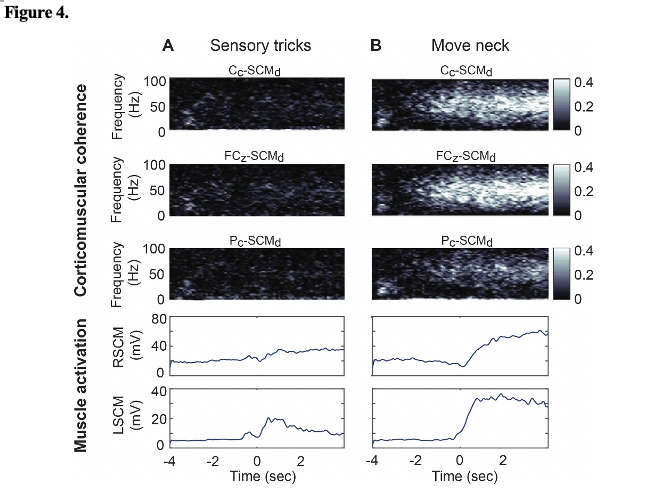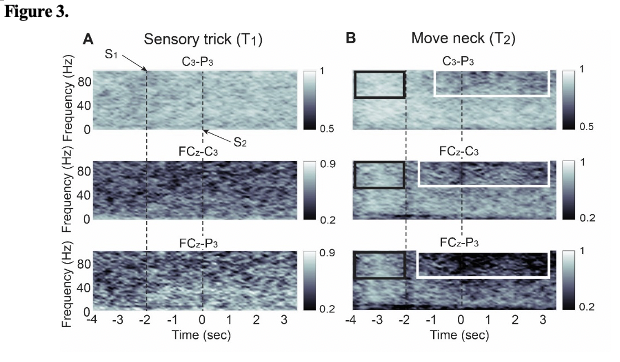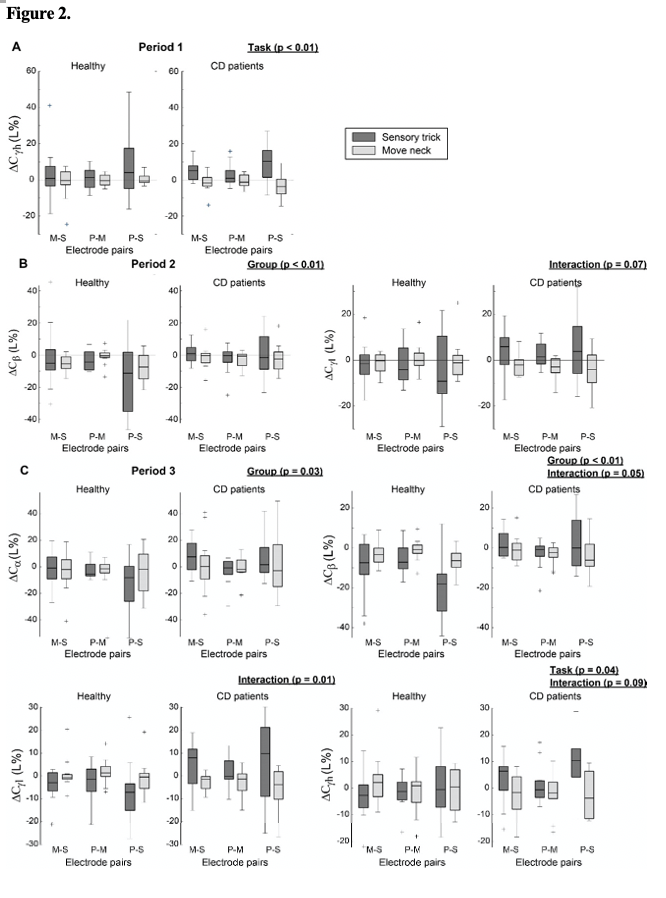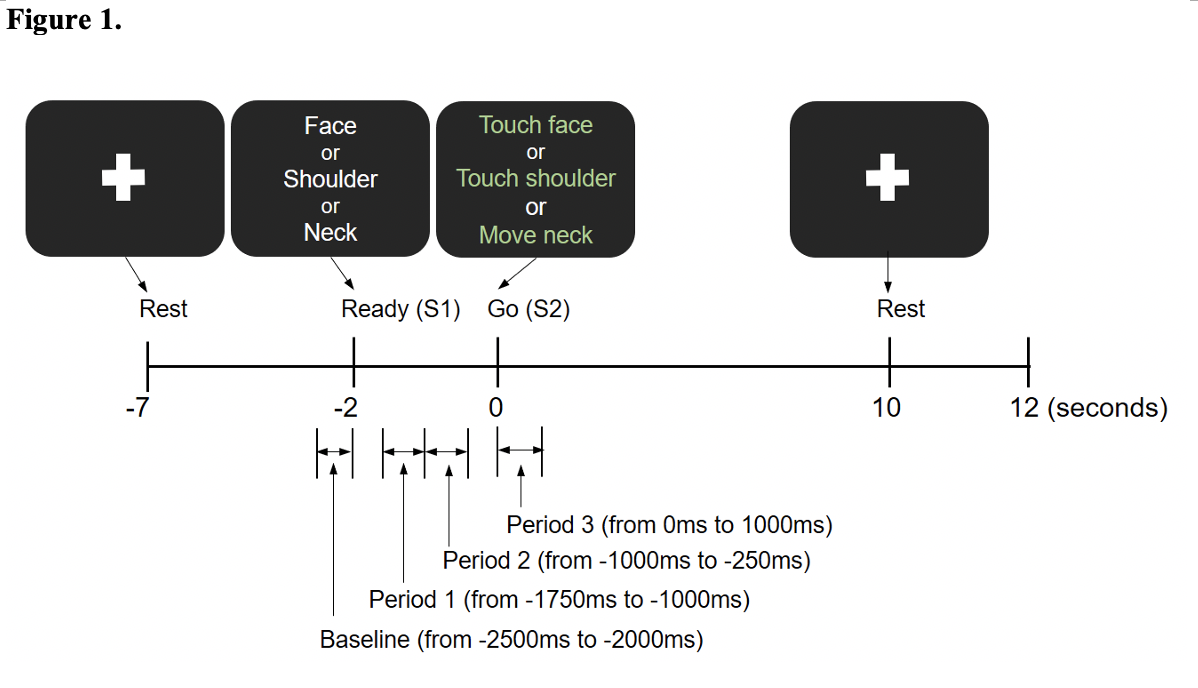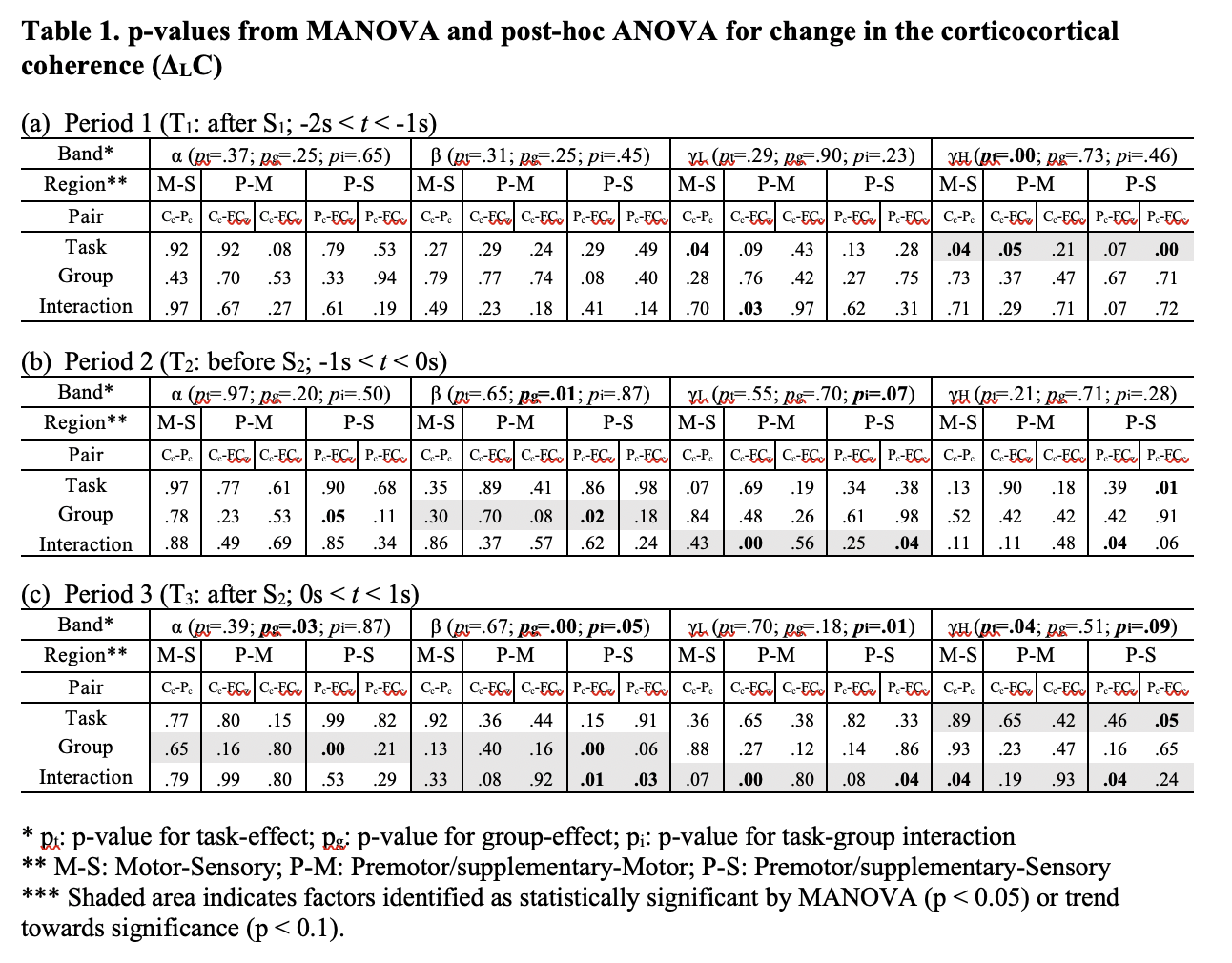Category: Dystonia: Pathophysiology, Imaging
Objective: To examine mechanisms underlying sensory tricks in cervical dystonia (CD) by examining interactions between cortical areas and between cortical areas and relevant muscles.
Background: Sensory tricks, or ‘geste antagoniste’, denote maneuvers that temporarily relieve dystonic postures. Previous studies reported that sensory tricks are effective in a majority of cervical dystonia (CD) patients, ranging from 75% to 90%. However, the neurophysiological mechanisms of sensory tricks have not been clearly understood.
Method: Thirteen CD patients and thirteen age-matched healthy controls performed one of the three forewarned reaction time tasks, sensory tricks or two other tasks that replicated aspects of the trick (i.e., moving their necks or arms). Control subjects mimicked sensory tricks. Coherence estimates were calculated between electroencephalogram signals from premotor, motor, and sensory areas, and between the electroencephalogram and electromyogram signals from dystonic muscles.
Results: Significant between-task and between-group differences were found in coherence between different cortical regions. Immediately after the warning stimulus, only a between-task difference in the γ-band was found in pairs including premotor area. Before the imperative stimulus, more significant effects of group and task×group interaction appeared in β- and γ-bands of the same pairs, as a significant increase in coherence during sensory tricks was observed only in patients. During the movements, effects of task, group, and task×group were significant in pairs including the sensory area; in patients, corticocortical coherence increased during sensory tricks but decreased during voluntary neck movements, while opposite trends were observed in healthy subjects. Two patient subgroups were identified from muscle activity (effective vs. forcible tricks), and only those with effective tricks showed significant between-task decrease in corticomuscular coherence.
Conclusion: Corticocortical connectivity of CD patients significantly increased before and during sensory tricks compared to voluntary neck rotation in CD patients, suggesting that sensory tricks enhance corticocortical connectivity, facilitated by normalized motor preparation, which in turn significantly reduces corticomuscular connectivity.
References: 1. Jahanshahi M. Factors that ameliorate or aggravate spasmodic torticollis, J Neurol Neurosurg Psychiatry 2000; 68: 227-229. 2. Schramm A, Reiners K, Naumann M. Complex mechanisms of sensory tricks in cervical dystonia, Mov Disord 2004; 19: 452-458. 3. Patel N, Hanfelt J, Marsh L, Jankovic J. Alleviating manoeuvres (sensory tricks) in cervical dystonia. J Neurol Neurosurg Psychiatry 2014; 85: 882-884.
To cite this abstract in AMA style:
S. Cho, S. Lee, H. Shin, M. Hallett. Sensory Tricks Modulate Corticocortical and Corticomuscular Connectivity in Cervical Dystonia [abstract]. Mov Disord. 2021; 36 (suppl 1). https://www.mdsabstracts.org/abstract/sensory-tricks-modulate-corticocortical-and-corticomuscular-connectivity-in-cervical-dystonia/. Accessed April 3, 2025.« Back to MDS Virtual Congress 2021
MDS Abstracts - https://www.mdsabstracts.org/abstract/sensory-tricks-modulate-corticocortical-and-corticomuscular-connectivity-in-cervical-dystonia/

